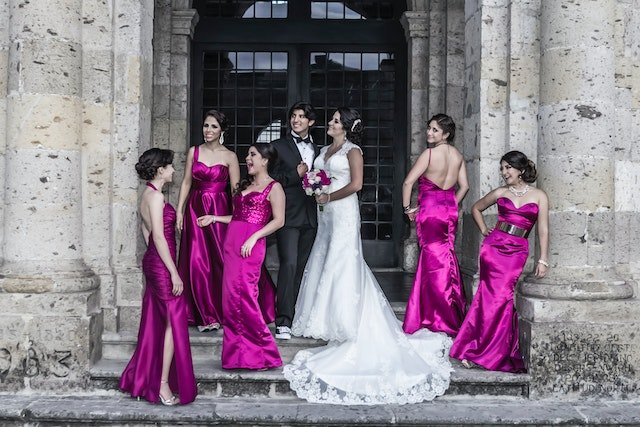
The tradition of bridesmaids dates back centuries, and has a rich history that is rooted in ancient customs and beliefs. While the specific origins of bridesmaids may be unclear, it is believed that they were initially included in weddings as a way to bring good luck and protection to the bride on her wedding day.
One of the earliest recorded examples of bridesmaids can be traced back to ancient Roman times, where bridesmaids dressed in similar attire to the bride as a symbol of unity and protection. This was believed to confuse evil spirits who might try to harm the bride, as the bridesmaids’ similar appearance would make it difficult for them to determine which woman was the actual bride.
In medieval Europe, the tradition of bridesmaids evolved further, and bridesmaids were often chosen from among the bride’s close friends and family members. These bridesmaids would accompany the bride on her wedding day and would often wear matching dresses and accessories to symbolize their unity and support for the bride.
In addition to offering protection and good luck, bridesmaids also played a role in helping the bride prepare for her wedding day. They would assist with tasks like making the bride’s dress, arranging the wedding flowers, and preparing the wedding feast. This helped to ease the bride’s stress and ensure that the wedding day ran smoothly.
Another reason that bridesmaids became a tradition is to act as witnesses to the wedding ceremony. In some cultures, having a group of witnesses was important to validate the union of the bride and groom, and bridesmaids were often chosen to fulfill this role.
As weddings became more elaborate and formal, the role of bridesmaids evolved. During the Victorian era, for example, bridesmaids’ dresses were often made from luxurious fabrics like silk and satin and were adorned with intricate lace and beading. These dresses were designed to complement the bride’s gown and were meant to reflect the wealth and status of the bride’s family.
In the 20th century, the tradition of bridesmaids continued to evolve, and new styles and designs were introduced. The 1970s saw the introduction of bridesmaids’ dresses in brighter colours and bold patterns, while the 1980s saw a return to more traditional styles, with bridesmaids’ dresses in classic colours like navy blue, emerald green, and crimson red.
Today, the tradition of bridesmaids is still an important part of many weddings, and continues to symbolize the love and support of the bride’s closest friends and family members. While the specific role of bridesmaids may have evolved over the centuries, their purpose remains the same: to assist the bride on her wedding day and offer her love, support, and good luck on the start of her new life.
In conclusion, the tradition of bridesmaids has a rich and fascinating history that dates back centuries. From its roots in ancient Rome, to its evolution in medieval Europe and the Victorian era, to its current form in the 21st century, the tradition of bridesmaids has always been about symbolizing the love and support of the bride’s closest friends and family members on her wedding day. Whether you choose to have a large bridal party or a smaller group of attendants, bridesmaids dresses will play an important role in creating a beautiful and memorable wedding day.